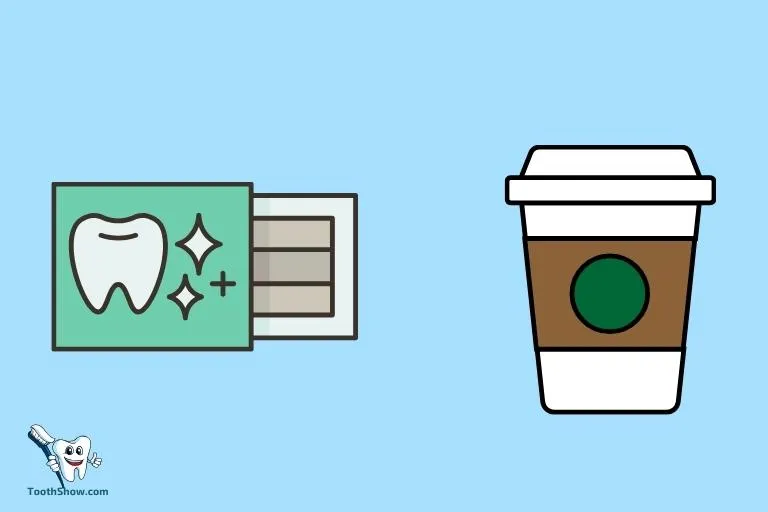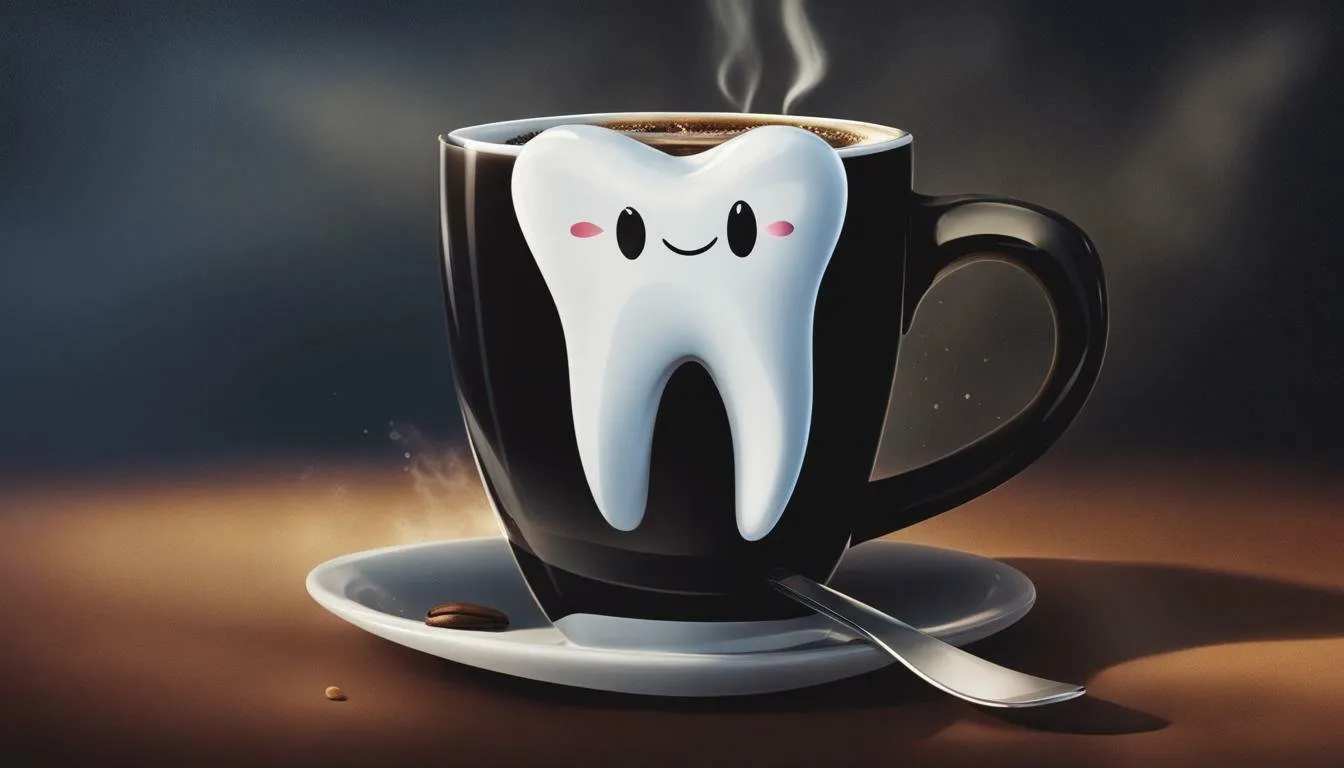Understanding Teeth Whitening & Coffee
Teeth whitening has become a popular cosmetic procedure, offering a brighter and more confident smile. Simultaneously, coffee is a beloved beverage for many. However, the desire for a brilliant white smile often clashes with the enjoyment of coffee. This article delves into the intersection of coffee consumption and teeth whitening, providing you with a comprehensive guide on the do’s and don’ts to achieve the best results. It’s essential to understand how these two elements interact to maintain both your oral health and your daily caffeine fix. This guide is designed to help you navigate this common dilemma, allowing you to make informed choices.
The Science Behind Teeth Whitening
Teeth whitening treatments work by using bleaching agents, typically hydrogen peroxide or carbamide peroxide, to break down stains and discoloration on the enamel. These agents penetrate the enamel and dentin, the layer beneath the enamel, to oxidize the stain molecules. This process lightens the color of your teeth. The effectiveness of these treatments depends on the concentration of the bleaching agent, the duration of exposure, and the type of stains present. Different methods, such as professional whitening at a dentist’s office or at-home whitening kits, use varying concentrations and application methods. Understanding this process is crucial to understanding how external factors like coffee can impact the results.
How Coffee Impacts Teeth Whitening

Coffee is notorious for staining teeth due to its high concentration of tannins, which are polyphenols that bind to the enamel and cause discoloration. When teeth are undergoing whitening treatments, the enamel becomes more porous and susceptible to staining. This means that coffee, with its dark pigments, can quickly counteract the whitening process, leading to a less effective outcome. The porous nature of the enamel during whitening allows coffee molecules to penetrate and re-stain the teeth. The degree of staining depends on several factors, including the frequency of coffee consumption, the type of coffee, and the duration of the whitening treatment.
Coffee’s Staining Effect on Teeth
Coffee contains chromogens, which are pigments that easily adhere to the tooth enamel. These pigments, combined with tannins, create a perfect storm for staining. The rougher the tooth surface, the more likely the coffee pigments will stick. In addition, the acidity of coffee can soften the enamel, making it even more vulnerable to staining. The longer the coffee stays in contact with the teeth, the more pronounced the staining will be. This is why frequent sips and prolonged contact can lead to significant discoloration. Understanding these mechanisms is essential to developing strategies to minimize staining during and after teeth whitening.
Coffee’s Impact on Whitening Treatments
The impact of coffee on whitening treatments can be significant. Regular coffee consumption during the whitening process can diminish the treatment’s effectiveness, causing the teeth to re-stain quickly. This means you might not achieve the desired results or need to undergo more frequent or stronger treatments. Moreover, coffee can lead to uneven whitening. Different areas of the teeth might absorb coffee pigments at varying rates, resulting in a mottled appearance. Therefore, it is crucial to carefully consider your coffee habits when planning or undergoing teeth whitening to achieve the best possible outcome and maintain a bright, even smile.
Best Practices for Coffee Consumption

If you are unwilling to give up your coffee, several strategies can minimize staining while whitening. Moderation is critical. Reducing the amount of coffee consumed per day helps to limit the exposure of your teeth to staining agents. Consider switching to lighter roasts, as darker roasts tend to have more intense pigments. Diluting coffee with milk or cream can also reduce staining potential, as the fat content helps to create a barrier between the coffee and your teeth. Also, drinking coffee quickly instead of sipping slowly decreases the time the coffee spends in contact with your teeth.
Timing Coffee Consumption
The timing of your coffee consumption relative to your whitening treatment is vital. Ideally, you should avoid coffee for at least one to two weeks during and after your whitening treatment. If this is not possible, it’s best to drink coffee immediately before or after your whitening treatment. Waiting as long as possible after whitening before having coffee allows the enamel to remineralize, making it less susceptible to stains. Additionally, consuming coffee quickly, as opposed to sipping it over extended periods, minimizes the time the staining agents are in contact with your teeth. Another strategy is to drink coffee in one sitting rather than throughout the day.
Using a Straw
Using a straw is one of the most effective ways to minimize coffee’s contact with your teeth. By positioning the straw behind your front teeth, you can bypass your teeth entirely, thus reducing the risk of staining. This simple technique is particularly useful during the whitening process when your enamel is most vulnerable. A straw ensures that the coffee doesn’t directly touch the surfaces of your teeth, allowing you to enjoy your beverage without compromising your whitening efforts. This is a simple yet highly effective measure to protect your newly whitened teeth.
Oral Hygiene Routine

Maintaining a strict oral hygiene routine is essential to counteract coffee staining. Brush your teeth immediately after consuming coffee, or at least as soon as possible. This helps to remove the coffee pigments before they can adhere to the enamel. Flossing daily also removes coffee particles and helps prevent stains between your teeth. Using a whitening toothpaste can further aid in removing surface stains and maintaining your bright smile. Regularly rinsing your mouth with water or a mouthwash after drinking coffee can also help to remove coffee residue and prevent staining. Consistent oral hygiene is your first line of defense against coffee-related staining.
Other Beverages to Consider
If you are trying to minimize staining, consider alternatives to coffee. Herbal teas, especially those without tannins, are a good option. Green tea, although containing tannins, can be consumed in moderation. Water is always an excellent choice, as it helps to rinse away any staining particles and keeps you hydrated. Clear beverages like sparkling water or lightly flavored water can also be enjoyed without risking stains. Be mindful of dark-colored juices, sodas, and sports drinks, as they can also contribute to staining. Choosing lighter-colored beverages will help you maintain your white smile during and after whitening treatments.
Foods to Avoid While Whitening
In addition to coffee, several foods can stain your teeth and should be avoided or consumed in moderation while undergoing teeth whitening. These include red wine, berries, soy sauce, balsamic vinegar, and curries. These foods contain strong pigments that can quickly stain your teeth. Be cautious with foods containing artificial colorings, as they can also contribute to discoloration. A general rule of thumb is that if a food can stain a white shirt, it can also stain your teeth. Sticking to a diet of light-colored foods will help maximize your whitening results and protect your teeth from staining during the whitening process.
Maintaining Your White Smile

Maintaining your white smile requires ongoing care and attention. After completing your whitening treatment, practice good oral hygiene by brushing and flossing regularly. Periodic touch-up treatments can help you maintain the brightness of your teeth. Consider using a whitening toothpaste and mouthwash to help remove surface stains. Regular dental checkups are essential for professional cleanings, which help to remove plaque and surface stains. Be mindful of your diet and limit your consumption of staining foods and beverages. By following these practices, you can prolong the results of your whitening treatment and enjoy a consistently bright smile.
Regular Dental Checkups
Regular dental checkups and professional cleanings are crucial to maintaining a bright smile. Your dentist can remove plaque, tartar, and surface stains that can build up over time. Professional cleanings also help to polish your teeth, making them appear brighter. During your checkups, your dentist can assess the overall health of your teeth and gums, identifying any potential issues that might affect your smile. They can also provide personalized advice on maintaining your oral hygiene and preventing staining. Scheduling regular dental appointments is a proactive step in protecting your investment in teeth whitening and maintaining a healthy, radiant smile.
Professional Whitening Touch-ups
Professional whitening touch-ups can be a valuable part of your oral care routine. Over time, your teeth may naturally darken due to staining from food and beverages, or simply due to aging. Touch-up treatments at your dentist’s office can help restore the brightness of your teeth. These treatments are typically quick and effective, often using a higher concentration of bleaching agents than at-home kits. The frequency of touch-ups depends on your lifestyle and dietary habits. Discuss the best schedule for touch-up treatments with your dentist to ensure that you maintain a consistently bright and healthy smile. Professional whitening provides a reliable way to keep your smile looking its best.
